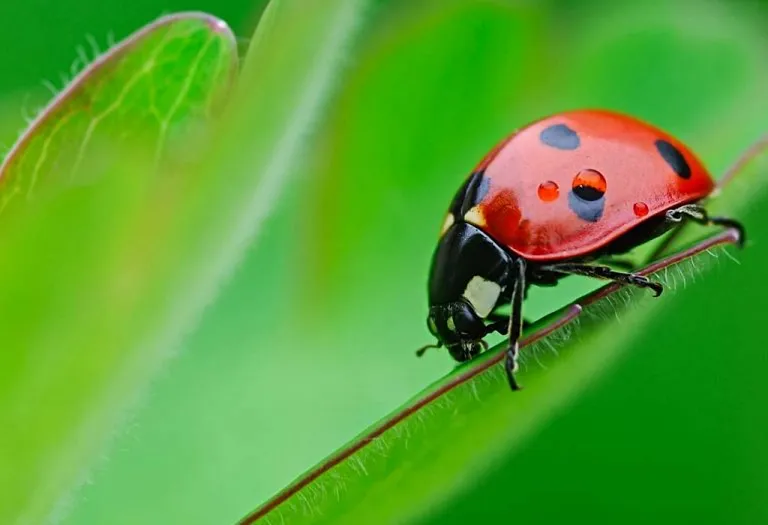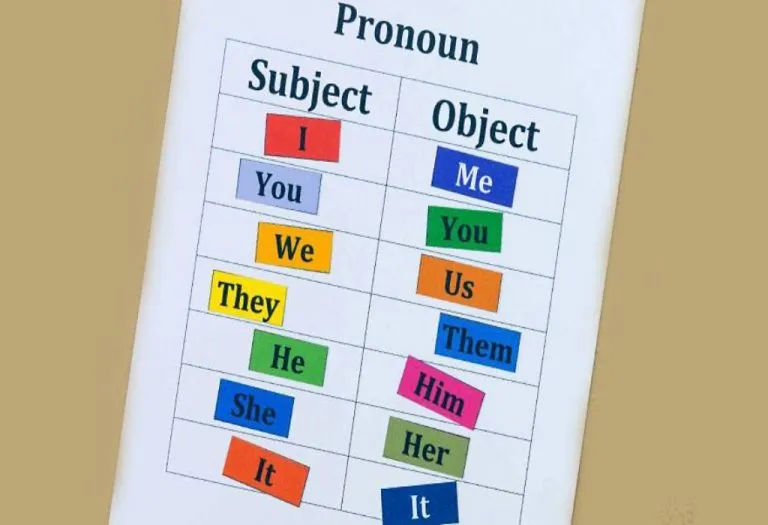18 Surprising Ladybug Facts for Kids
Ladybugs are undoubtedly one of the most adorable insects, and kids find them fascinating too! It is not only their dainty dome-shaped appearance with striking colors that attracts children, but also the fact that they can safely hold these tiny creatures, making them a favorite among little ones. Did you know that ladybugs are actually beetles, not bugs? These helpful insects are great for gardens because they eat harmful pests like aphids. If your kid is a ladybug fan, you can share some more fascinating and fun facts about ladybirds with them. For instance, a ladybug can eat up to 5,000 insects in its lifetime! The following blog shares exciting ladybug facts, so read on to learn some cool ladybug insect facts that will amaze your child!
Where Do Ladybugs Live?
Ladybugs live in gardens, forests, and fields where they can find plenty of aphids to eat. They also shelter under leaves, rocks, and tree bark to stay safe from predators. Some species even hibernate in homes during winter!
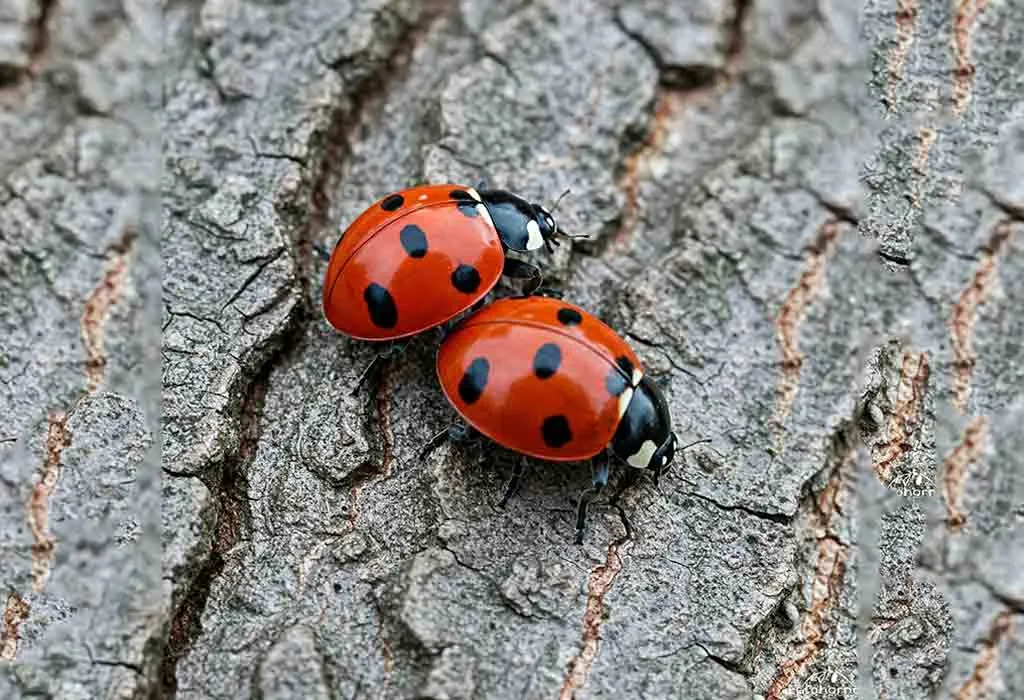
Image Source : AI Generated Image
How Long Does a Ladybug Live?
A ladybug typically lives about 1 to 2 years in the wild. However, their lifespan depends on factors like climate, predators, and food availability. Some may survive only a few months, while others in ideal conditions can live slightly longer.
Life Cycle of Ladybug
Ladybugs undergo a complete metamorphosis, passing through four distinct stages: egg, larva, pupa, and adult. Each phase plays a crucial role in their development.
1. Eggs
Female ladybugs lay small clusters of yellow or orange eggs on the undersides of leaves, often near aphid colonies. These eggs are oval-shaped and typically hatch within 3 to 7 days, depending on environmental conditions. The placement near food sources ensures the larvae have immediate access to nourishment after emerging.
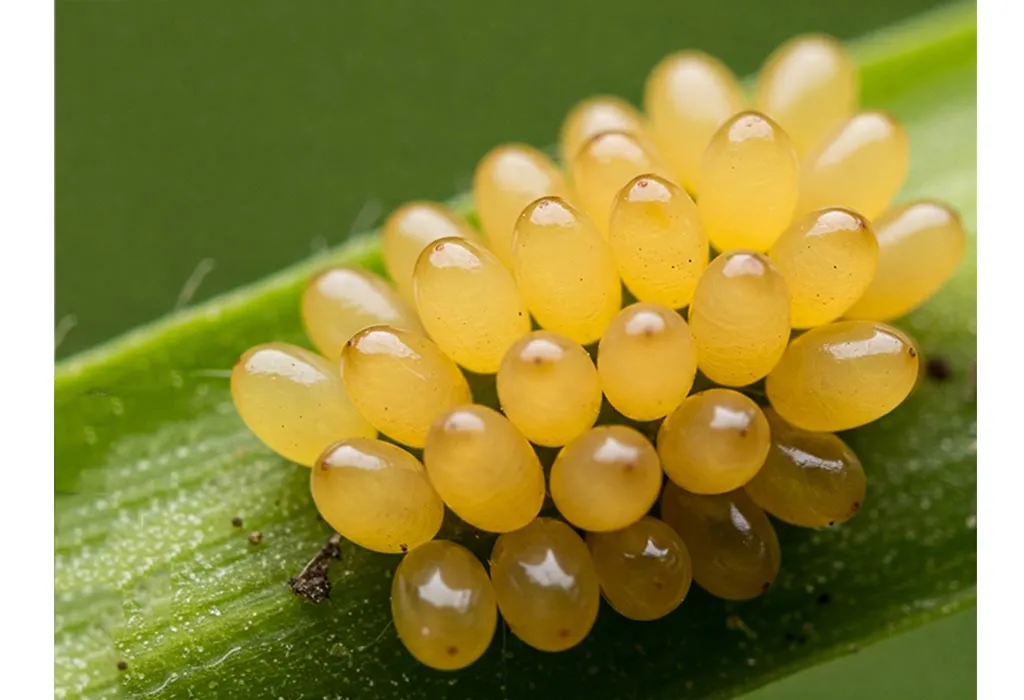
Image Source : AI Generated Image
2. Larvae
Once hatched, the larvae resemble tiny, elongated insects with segmented bodies, often dark in color and marked with bright spots. They are highly active and feed aggressively on aphids and other small insects. This stage lasts for about two to three weeks, during which the larvae grow rapidly before entering the next phase.
3. Pupa
After reaching full size, the larvae attach themselves to a leaf or stem and form a pupa. During this stage, they undergo a dramatic transformation inside a protective casing. The pupal stage lasts approximately 5 to 7 days, after which the adult ladybug emerges.
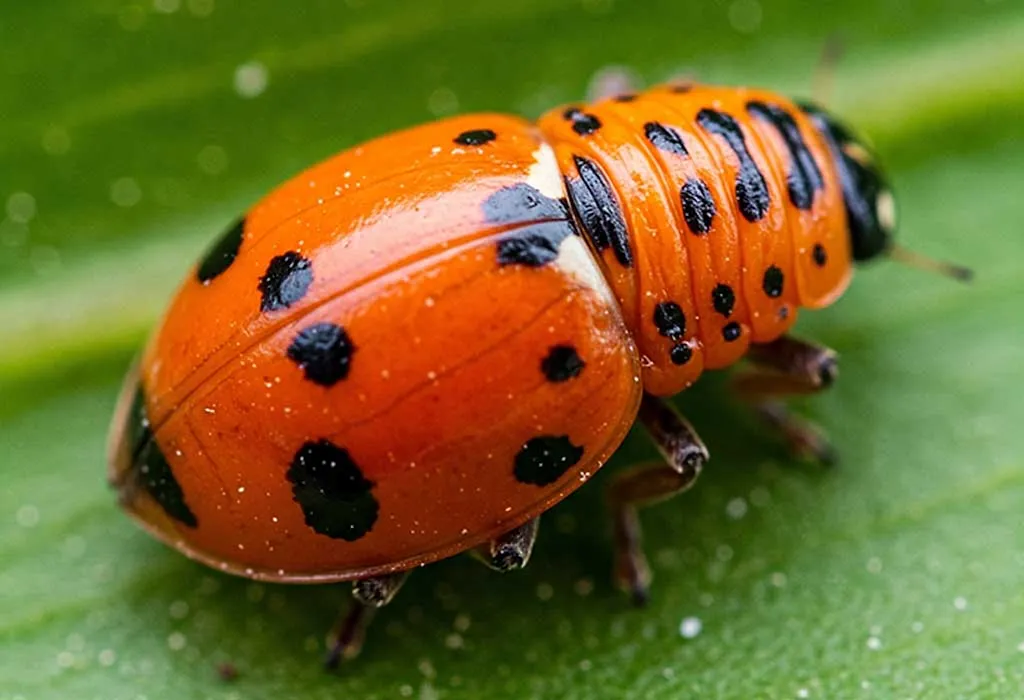
Image Source : AI Generated Image
4. Adult
The newly emerged adult ladybug has soft wings that harden and develop their characteristic bright colors within hours. Adult ladybugs continue to feed on pests like aphids, helping control garden infestations. They can live for several months to over a year, depending on species and environmental factors. Some hibernate during colder months, often gathering in sheltered locations.
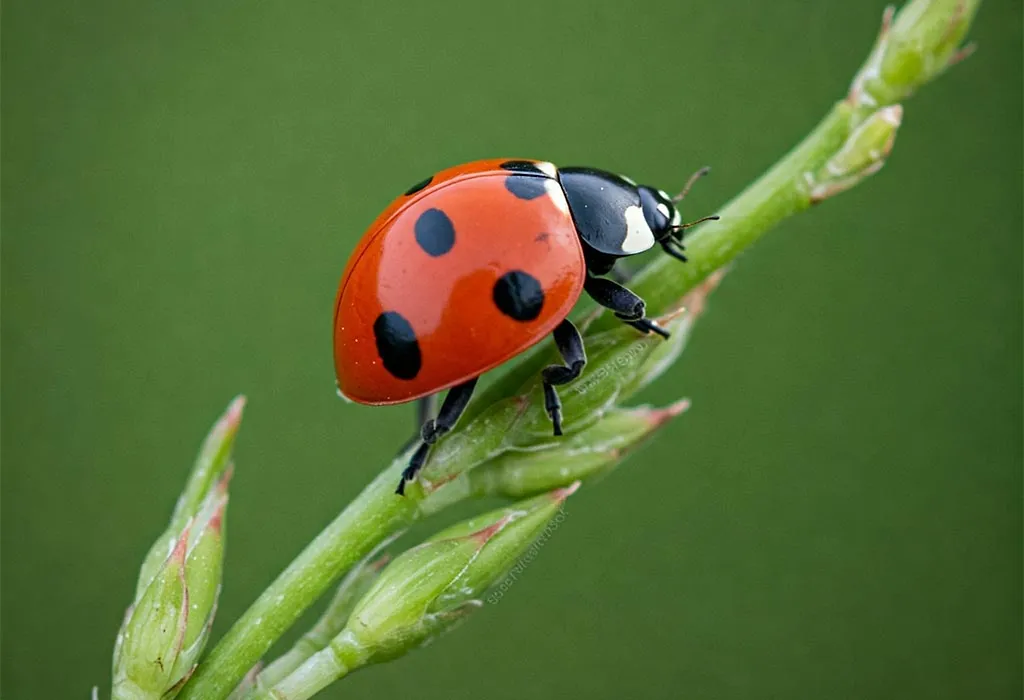
Image Source : AI Generated Image
What Do Ladybugs Eat?
Ladybugs are voracious predators that mainly feed on soft-bodied pests like aphids, mites, and scale insects. A single ladybug can devour up to 50 aphids daily, making them a gardener’s best friend. While most species are beneficial predators, a few varieties may occasionally eat pollen or plant matter when prey is scarce. Their appetite for destructive pests makes them nature’s tiny pest control agents. Ladybirds lay eggs in and around aphids’ colonies and as soon as these eggs hatch, they start feeding on aphids.
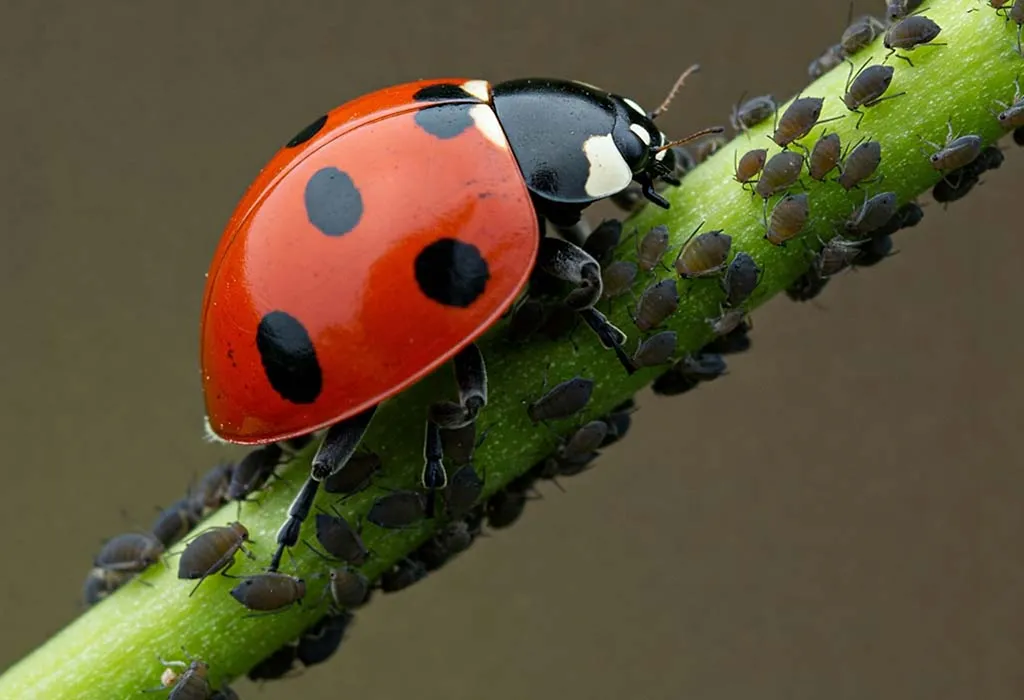
Image Source : AI Generated Image
Did You Know There Are 5,000+ Ladybug Species?
Most people often think that ladybugs are red with black spots on them, well, in reality, there are more than 5000 species of ladybirds found across various parts of the world. Out of these 5000 species, approximately 450 species of ladybugs are found in North America alone.
Why Are Ladybugs So Colorful?
These lovable bugs are found in many colours in various parts of the world. They can be yellow, pink, brown, orange, or black in colour. Some of these bugs may have spots on them and others may have no spots at all. There are also some varieties of ladybugs that have strips on them instead of spots.
How Do Ladybugs Survive Winter?
These pretty insects hibernate in winters, which can extend up to nine months in some cases. During this time, ladybird insects survive on their stored fat reserves. These bugs are most active from spring to fall. As winter sets in, they look for warmer places to hibernate.
Ladybugs Aren’t Bugs—They’re Beetles!
Ladybugs are not actually a kind of bug and they are actually beetles and this is why they are called ladybird beetles or lady beetles. Ladybug in reality is a name given to Coccinellidae, which are types of beetles.
What Are the Strangest Parts in the Ladybug’s Life Stage?
Ladybugs have four stages of metamorphoses, which is very much like butterflies. From tiny eggs, they turn into larvae where they appear like tiny alligators. During the larvae stage, the bug tends to shed its skin many times. Then the larvae enter the third stage, in which it turns into pupal. The pupal stage lasts for almost two weeks before they turn into ladybugs and this is the stage when their hidden wings appear too.
Do Ladybugs Really Eat Their Own Babies?
Ladybugs lay eggs before hibernating and they can lay as many as 1000 eggs in one season. Though these eggs are laid in aphid colonies, however, if there is any dearth of aphids to feed on, ladybugs may start eating their own eggs and larvae.

Who Named These Beetles ‘Ladybugs’?
The ‘Lady’ before the bugs’ name has a famous legend behind it that goes back to the Middle Ages when farmers’ entire crops were attacked by swarms of aphids. On praying to Mother Mary, the farmers noticed these tiny bugs on their farms that ate all the aphids that were destroying their crops. The thrilled and grateful farmers thus addressed these bugs as ‘Our Lady’s Beetles’ and since then, these tiny insects got their name as ladybugs.
Why Do Ladybugs Have Spots?
The tiny spots or lines on these adorable beetles are not only for appearance and looks, but are also to shoo away the predators. Apart from their striking color and spots, ladybugs also emit a foul-smelling liquid when startled or threatened, which is toxic for small mammals and birds.
Where Did Ladybugs Originate?
The seven-spot ladybugs were initially native to only the European sub-continent only, however, in 1900 these bugs were brought to North America to battle the obnoxious aphids’ problem which was destroying the crops.
How Do Ladybugs Fly With Tiny Wings?
The ladybugs have two types of wings. One set of wings is on the top, which acts as a protective shield for these bugs, however, the other set of wings is hidden underneath these wings, that is used for flying. Understanding ladybug anatomy reveals why these tiny beetles are such efficient predators, from their hidden flying wings to their toxin-secreting joints.
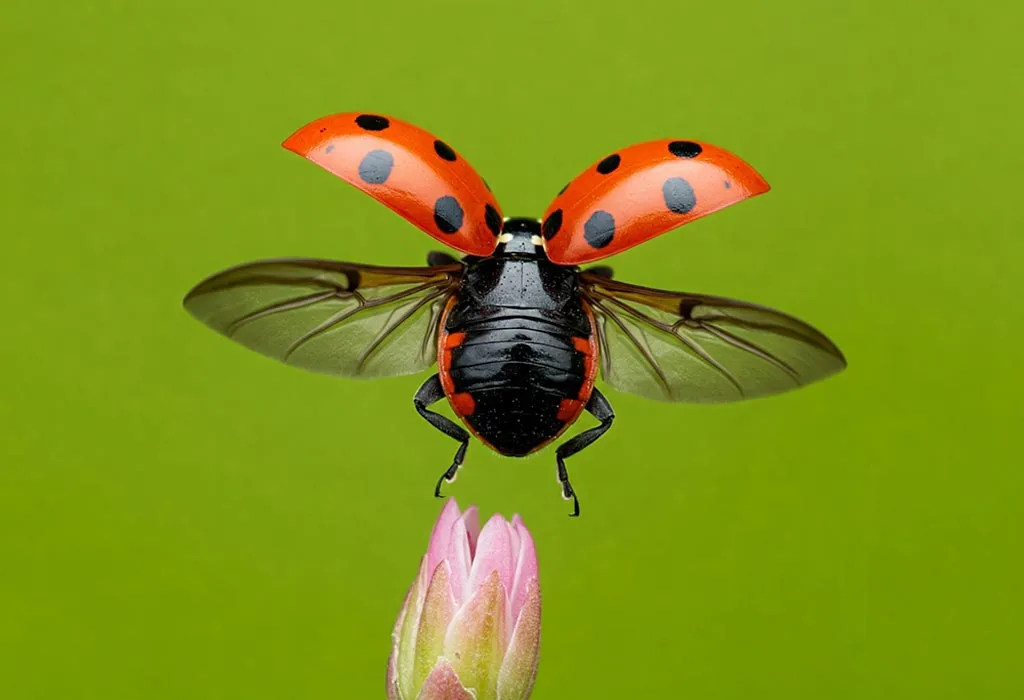
Image Source : AI Generated Image
How Long Do Ladybugs Live?
On average, a ladybug can live for a year, starting from an egg to an adult stage. However, there are some species that may live up to two to three years too.
What Caused the 4.5 Million Ladybug Washup?
One of the largest ladybugs washup occurred way back in 1940 in Libya when as many as 4.5 million bugs were found across the 21 miles shore. The facts for the same are not known, however, it was believed that these bugs were either swept across by windstorms or by water.
Can Ladybugs Actually See?
Ladybugs use their antennas and feet for smelling. Their feet and antennas also help them to look for food and know what is safe to eat. These bugs have eyes but these are not of much use because they cannot see clearly with their eyes. Their eyes can only help them to distinguish between light and dark only.
How Many Spots Does a Ladybug Have?
Ladybugs can have anywhere from 6 to twenty spots on their backs. These spots may increase in number as the ladybird ages. They also have 6 legs and three main body parts that include a head, abdomen, and thorax.
FAQs
1. Can ladybugs transmit diseases to humans?
While generally harmless, some people may experience mild allergic reactions to ladybug secretions. However, they are not known to transmit serious diseases.
2. Why do some ladybugs bite?
Certain species may nibble when handled, though their “bite” is more of a pinch and rarely breaks skin. This typically occurs when they mistake human sweat for food.
3. How do ladybugs mate and reproduce?
Ladybugs engage in complex mating rituals that can last several hours. Females can store sperm for months before fertilizing eggs, allowing strategic reproduction when food is abundant.
These were some interesting ladybug information and facts. Children often find themselves drawn to ladybugs and also prefer holding and playing with them. Educate your child about this fascinating insect by sharing these astounding facts and information on them. We hope that this post does the needful in providing the information you are looking to share with your kids!
Also Read:
Ant Facts for Children
Butterfly Facts for Children
Penguin Facts for Children
Facts about Mosquito for Children
Moth Facts and Information for Kids
Was This Article Helpful?
Parenting is a huge responsibility, for you as a caregiver, but also for us as a parenting content platform. We understand that and take our responsibility of creating credible content seriously. FirstCry Parenting articles are written and published only after extensive research using factually sound references to deliver quality content that is accurate, validated by experts, and completely reliable. To understand how we go about creating content that is credible, read our editorial policy here.





